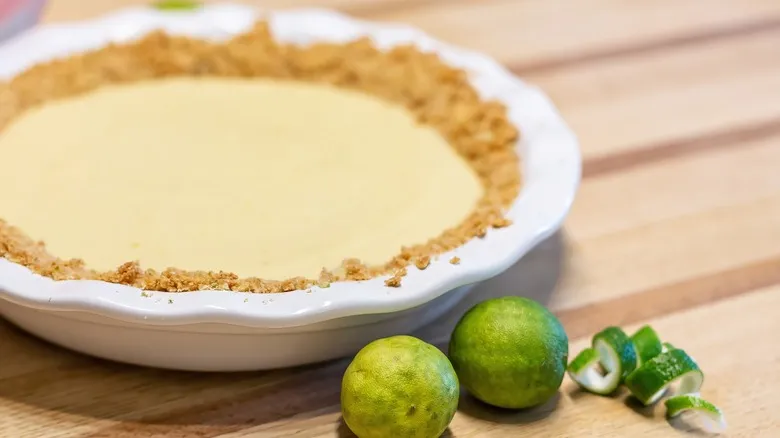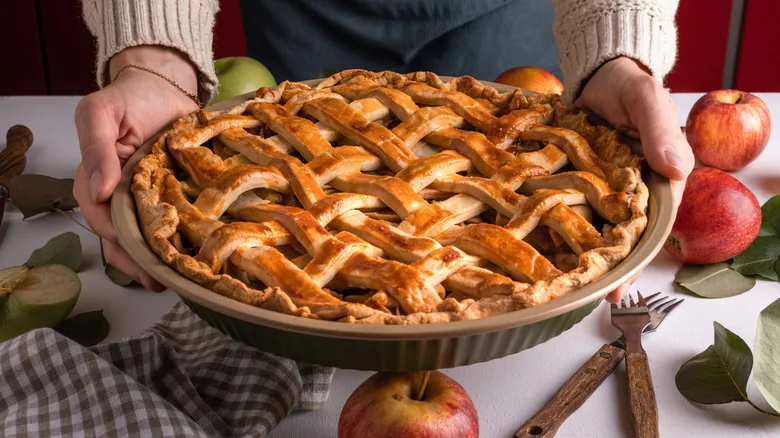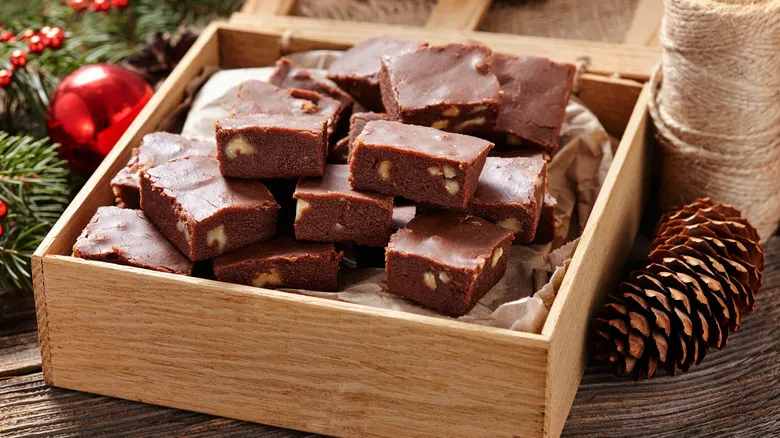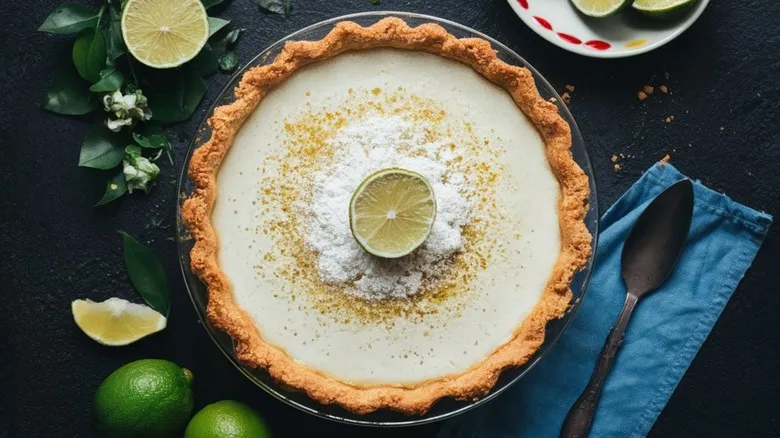How citrus works in your recipes

Grasping the role of lime in your pie involves more than just distinguishing between Key limes and their more common counterparts. In reality, the true culinary magic begins once you incorporate limes into your recipe. Adding citrus to dairy effectively neutralizes the milk proteins, causing them to clump together instead of remaining suspended in the liquid. Additionally, as noted by Saura Kline, the presence of citrus also impacts egg proteins. The acidity of lime juice denatures these proteins, similar to the effect of cooking them with heat. This is why you might hear that fish is "cooked" in ceviche, and it raises the debate about whether citrus makes eggs safe to consume.
However, before you rush to bake your Key lime pie in a frenzy, there's no need to panic — you have some leeway. While it's important to be mindful of the denaturing and curdling processes occurring in your pie, using sweetened condensed milk can help mitigate curdling. Unlike regular milk or heavy cream, sweetened condensed milk contains higher levels of protein and sugar, which shield it from the acid's denaturing effects. It also acts as an emulsifier, helping to bind the filling together. Therefore, if your pie includes sweetened condensed milk, you should have a bit more time to work with. Still, the best approach is to prepare the pie filling just when you need it.
Recommended

The Delicious Ingredient You Should Actually Avoid For Better Cinnamon Rolls

The Easy Way To Make Store-Bought Apple Pie Seem Homemade

Effortlessly Decorate Frosted Cakes With The Brilliant Paper Towel Hack

Here's Why Your Fudge Turned Out Grainy And How To Fix It
Next up

